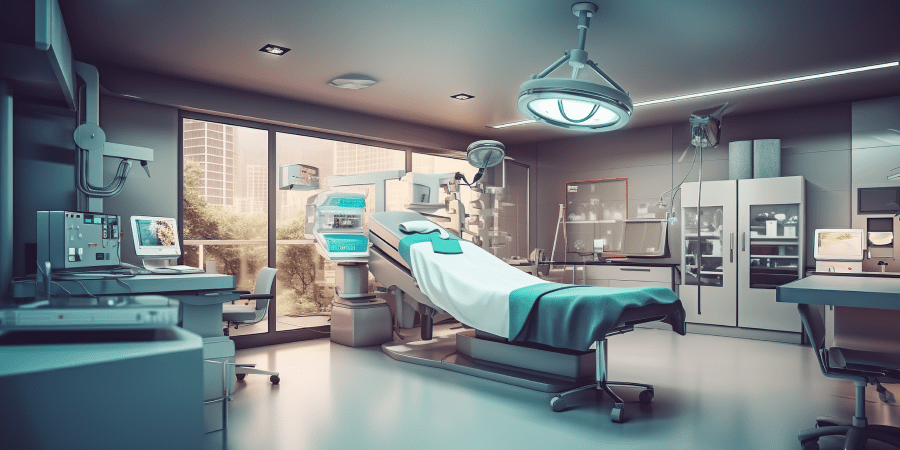In today’s world, we’re all looking for ways to be...
Healthcare spaces are often seen as sterile, functional environments where efficiency is prioritized over comfort. While functionality is essential, a purely clinical atmosphere can feel cold and uninviting for patients. To truly support patient well-being and create a positive experience, it’s important to design spaces that are both compatible with medical needs and aesthetically pleasing. A thoughtfully designed healthcare space can reduce patient anxiety, promote healing, and improve overall satisfaction.
In this blog, we’ll explore key design strategies to create a healthcare environment that balances functionality and aesthetics. This approach ensures your space feels welcoming and supportive for both patients and staff. We’ll look at ways to bring in natural elements, make navigation easier, and boost patient comfort, all while keeping in mind the needs of a busy medical facility.
Importance of Design in Healthcare
Before diving into the specifics, it’s important to understand why design matters in healthcare settings. Aesthetic design affects how well patients can recover, how efficiently staff work, and overall happiness in the environment. Good design helps you create a comforting space that makes patients feel relaxed and cared for. When there is well thought layout and decorations, it can improve communication among healthcare workers, make their jobs easier, and reduce mistakes. You can add things like natural light, plants, and calming colors that help everyone feel better mentally. In the end, smart healthcare design creates a supportive atmosphere that meets practical needs while encouraging healing.
Design Strategies that Balance Function and Beauty
Creating a healthcare environment that is both functional and aesthetically pleasing is essential for enhancing patient experiences and promoting healing. Here are some key strategies to consider when designing or renovating your healthcare space:

1. Start with Functionality
A smart layout helps everything run smoothly, allowing healthcare workers to provide the best care without wasting time. Let’s take the example of examination rooms, you should have all the necessary medical tools and enough space for doctors and patients to move around easily. The waiting areas in hospitals should be big enough to fit patients and their families, with comfortable seating, information displays, and maybe even snacks or drinks. By thinking about how each space will be used, you can create a setup that is both practical and welcoming. This approach ensures that the facility meets daily needs while also allowing for nice design touches that enhance the patient experience.
2. Design with Acoustics in Mind
Noise can cause a lot of stress and discomfort, especially in places like waiting rooms and exam rooms where patients might already feel anxious. To create a soundproof healthcare space, using sound-absorbing materials like carpets, acoustic panels, and soft furniture can really help reduce noise levels. Also, being smart about where you place furniture and how you arrange the space can keep sounds from traveling too much, making sure conversations and medical activities are less distracting. Designing healthcare with acoustics in mind, it can make patients feel more comfortable and secure, leading to a better overall experience for everyone.
3. Choose Calming Color Palettes
Colors have a big impact on how people feel, so make sure to use soft color tones, gentle shades can help patients feel relaxed and at ease during their visits. Choose colors like light blue, soft green, and warm beige to create a calming atmosphere, and make them a great choice for walls, furniture, and decorations. Avoid bright, harsh colors, as they can make people feel anxious. Instead, use a mix of soothing colors to create a calm atmosphere. When you add artwork or natural elements in these calming colors you can make the space more comforting, helping patients feel at home and supported during their visit.
4. Integrate Natural Elements
Bringing nature into your healthcare space is more than just making it look nice; it helps create a welcoming and healing environment. When you add natural elements in a healthcare space, it can really change the feel of the place and support healing. Trying to incorporate eco-friendly strategies like plants, natural light, and water features can make the space feel fresh and calm. Plants help you brighten up the area and clean the air, making it more inviting. Having large windows or skylights really makes a difference because they let in so much natural light. This can really lift people’s moods and help reduce stress. Also add water features like fountains or fish tanks to make everything feel more relaxing. By including these natural elements in the design, healthcare facilities can create a peaceful and inviting atmosphere.
5. Use Ergonomic Comfortable Furniture
When patients and staff have comfortable, well-designed furniture, it makes a big difference in how they feel. Ergonomic chairs and seating can help patients sit comfortably during long waits, which reduces discomfort and stress. Also, exam tables and work areas designed for comfort can help healthcare workers avoid strain and injuries, making it easier for them to do their jobs. Soft and supportive seating in waiting areas can really improve the way patients feel while they are waiting for their appointments. By focusing on comfortable seating for patients, healthcare facilities create a more inviting and pleasant atmosphere, which can help ease anxiety and promote a better overall experience.
6. Consider Future-Proofing Your Design
Healthcare is always changing, so it is essential to recognize that effective practices today might not meet the demands of tomorrow. That’s why we need to design spaces that can easily adapt to new tools, procedures, or ways of caring for patients. This means creating rooms that can be used for different purposes and using furniture that’s easy to move. Adding tech-friendly features, like charging stations and adjustable lights, can help your facility keep up with new trends. By planning ahead, you can build a healthcare environment that meets today’s needs and is ready for whatever comes next, helping both patients and staff.
7. Balance Cleanliness with Design
Balancing cleanliness with design is important for creating a healthcare space that feels safe and inviting. A clean environment is essential for keeping patients healthy, but it shouldn’t make the place feel cold or unwelcoming. Choosing materials that are easy to clean, like vinyl or special surfaces that resist germs, helps maintain hygiene without losing style. Good design can also include storage solutions that hide clutter, making it easier for staff to keep things tidy. Adding natural light, calming colors, and nice décor can improve the overall experience and show patients that their comfort matters.
The Bottom Line
Creating a compatible and aesthetic healthcare space requires a thoughtful approach to design that balances functionality with style. By focusing on key elements, you can create an environment that enhances patient comfort and staff efficiency. With attention to both practicality and aesthetics, your healthcare space can support patient care while providing a welcoming, visually pleasing atmosphere. But if you’re truly looking to transform your healthcare space, you should consult Inner Value Architects to help bring your vision to life. Their experts can guide you in creating a space that meets both your functional needs and design goals.










